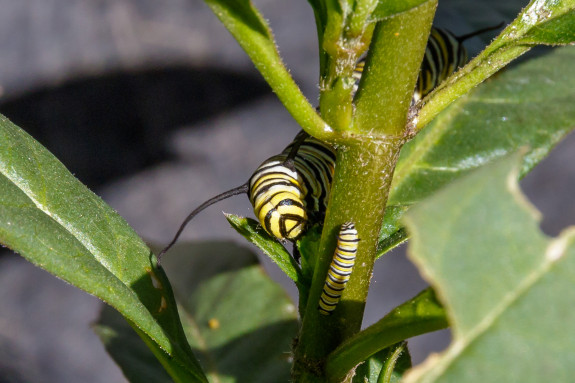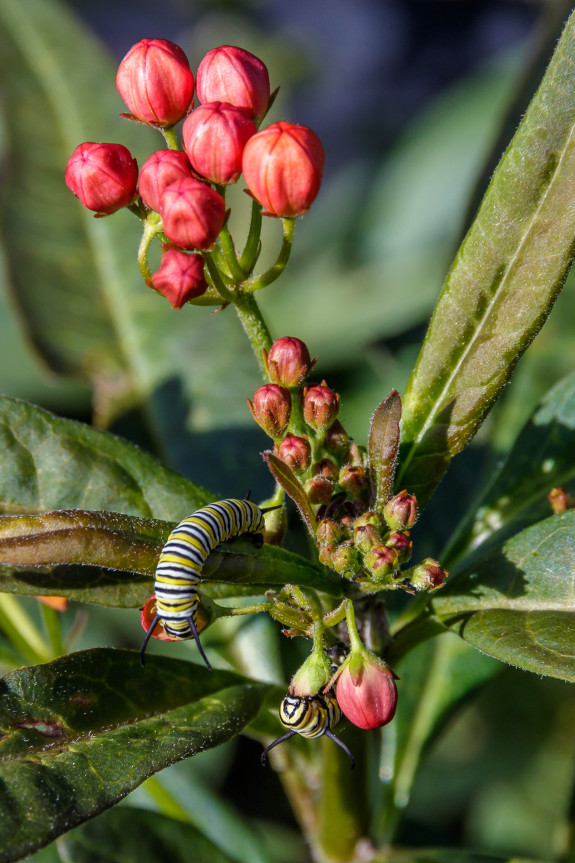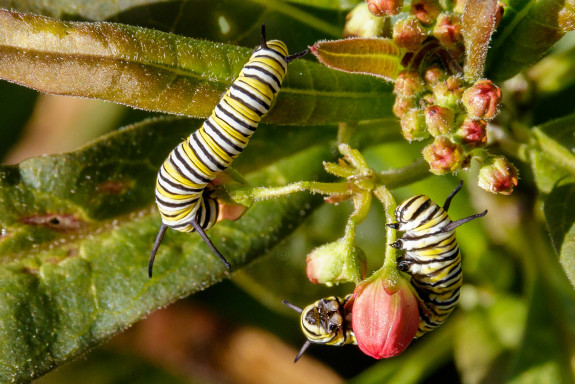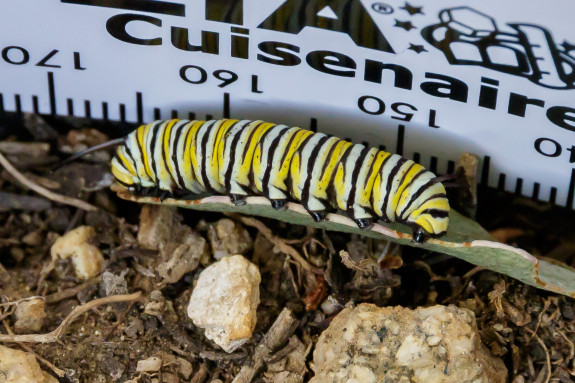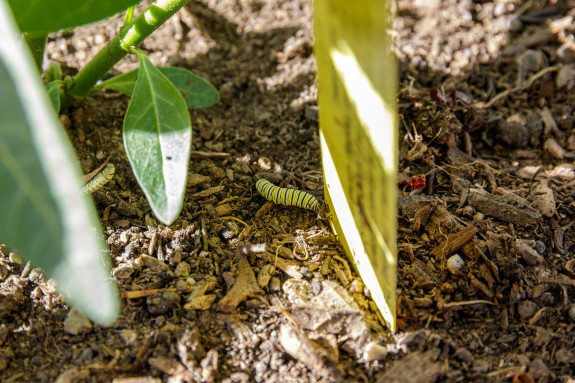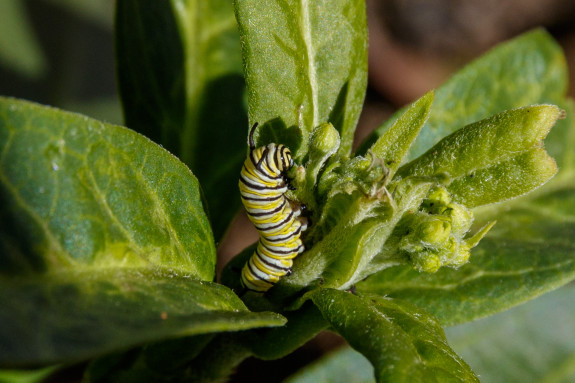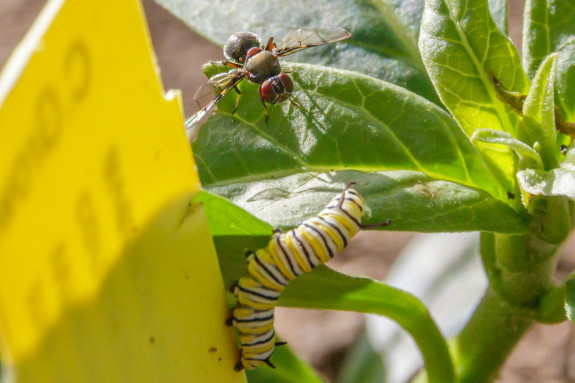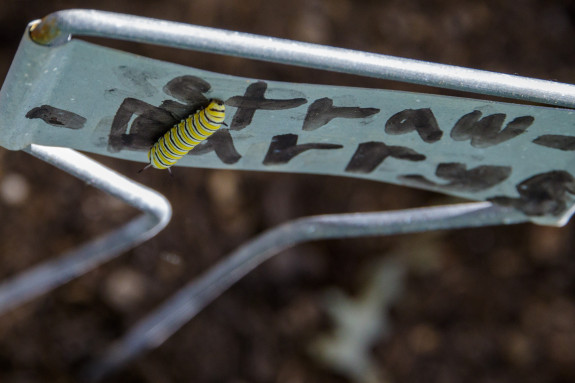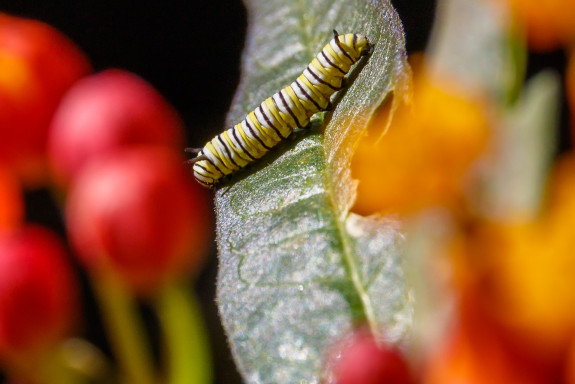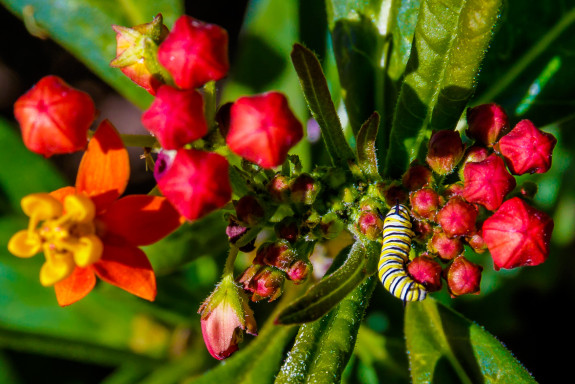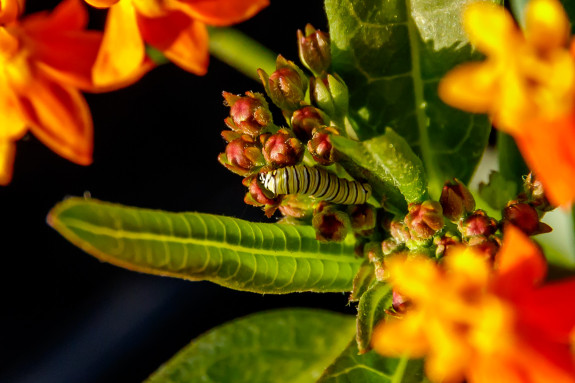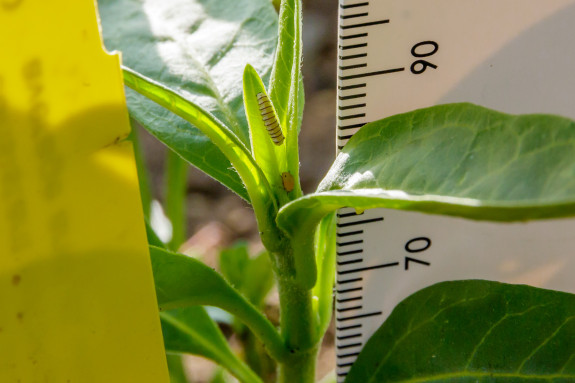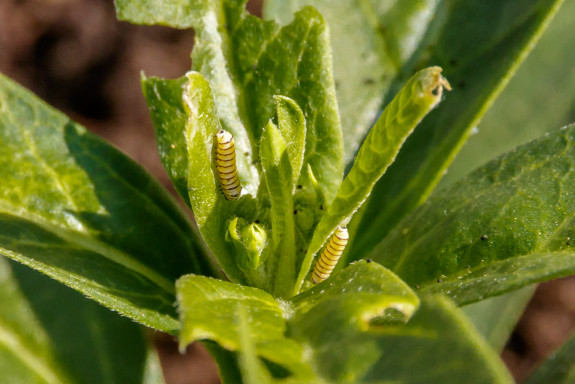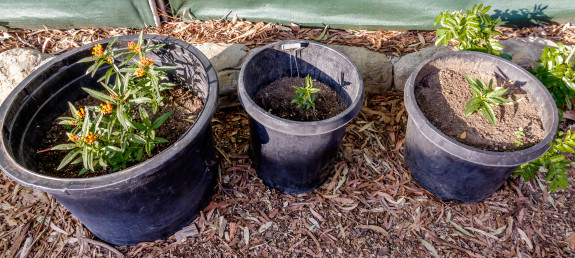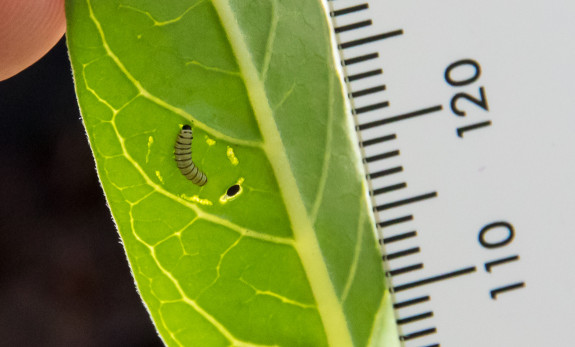A few weeks ago, Leane and her gardening elective students noticed a Monarch butterfly laying eggs on our garden’s newly potted milkweed plants. Then on the 18th, the students noticed that some of the eggs had already hatched. Check back here for daily updates and watch them grow and hopefully turn into butterflies.
March 6 – Day 17
We bid farewell to twelve of the bigger caterpillars today. We don’t have enough milkweed for them all to eat so Leane is taking a bunch of them to other places that have more well-established milkweed plants.
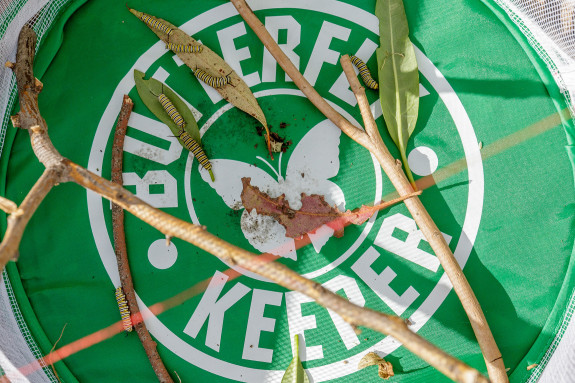
This is the milkweed plant in the middle plant, and you can see that it has been completely eaten by the few caterpillars that were on it.
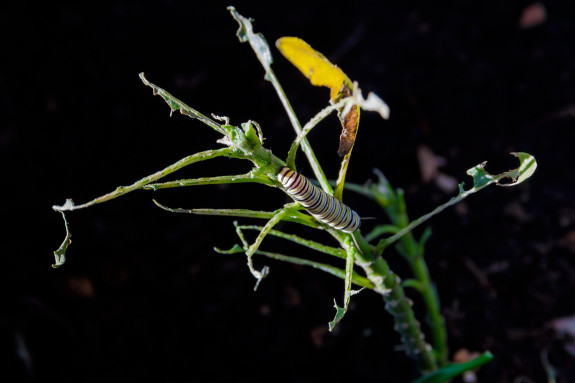
Here’s Big Joe, our biggest caterpillar. It was hard to get an accurate measurement, but our guess is he’s about thirty-five millimeters long.
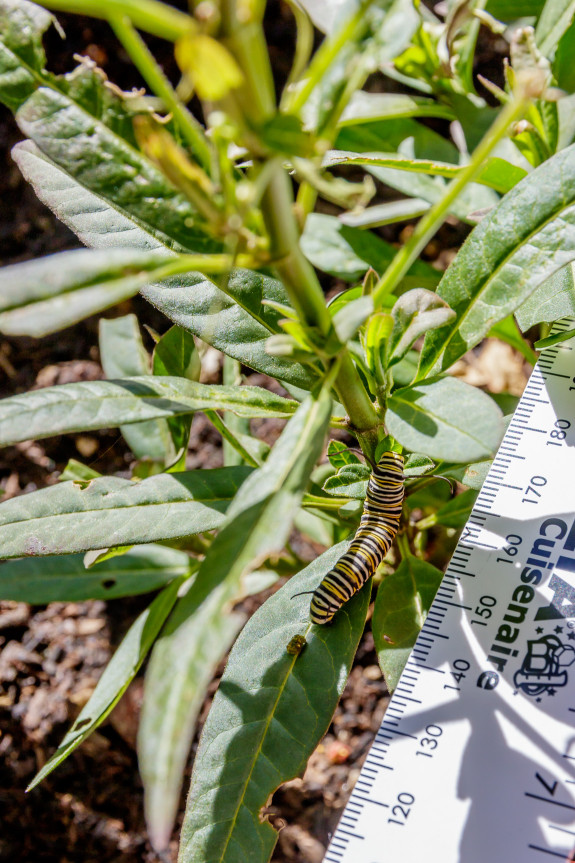
Here’s Big Joe next to one of our late bloomers. Tread lightly little guy.
March 3 – Day 14
Caterpillars keep growing. The biggest ones are over twenty millimeters long.
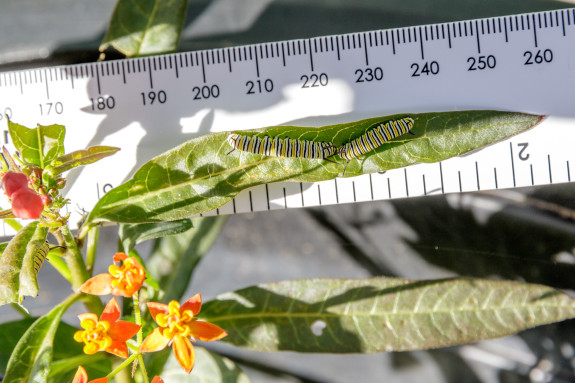
Here’s Big Joe resting on a leaf in one of the pots. He’s over twenty millimeters long when fully stretched out. He’s the fattest of all the caterpillars.
February 27th – Day 10
We took a count of all the caterpillars today. Between all three pots we found thirty caterpillars and four eggs. The gardening elective students dubbed the largest caterpillar, “Big Joe” and the smallest one they found, “Tiny Tim.” Big Joe is well over fifteen millimeters, though he was camera shy today.
The caterpillars were also getting some exercise today. We found them on the sides of pots, scooting around on the dirt as well has chillin out on a plant marker.
February 26th – Day 9
Caterpillar growth is really starting to take off now. The biggest one we could find is about thirteen millimeters long.
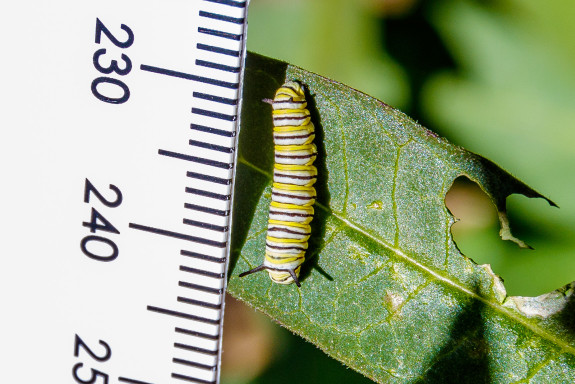
Here’s another of the larger caterpillars, and it appears to be eating on of the flower buds on this tropical milkweed plant.
February 23rd – Day 6
Lots of changes changes over the weekend. Some of the larger caterpillars have grown to about seven or eight millimeters long. Their black, yellow, and white bands are more distinct, and their sensory tentacles are growing more prominent.
Even with its head curled down a bit, this one is at least seven millimeters long.
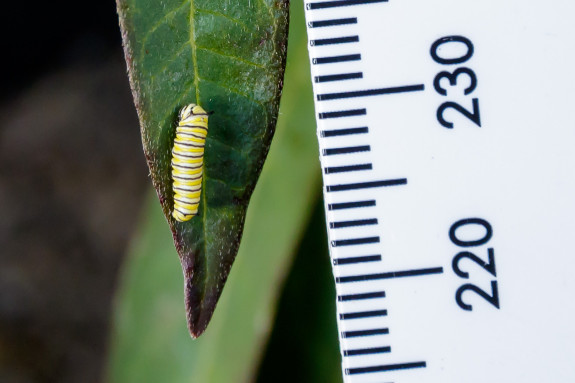
Here’s another caterpillar nestled further down the milkweed plant near the soil. Its head is at the lower right and shows off the newly emerging sensory tentacles.
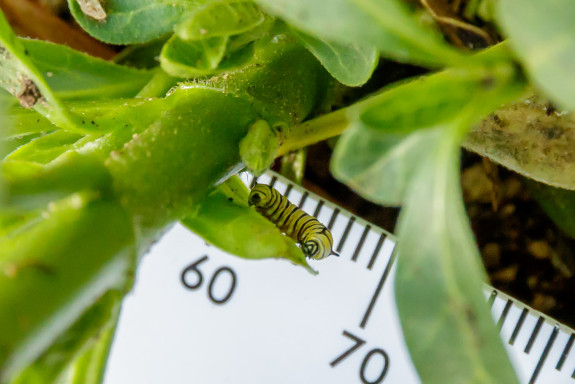
This little fella has nearly finished off the end of this leaf at the top of the plant near the flowers. There’s actually another caterpillar on the underside of the leaf just behind this one.
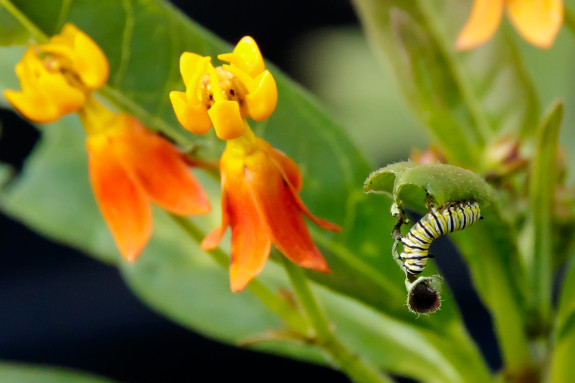
And there’s his buddy/competition.
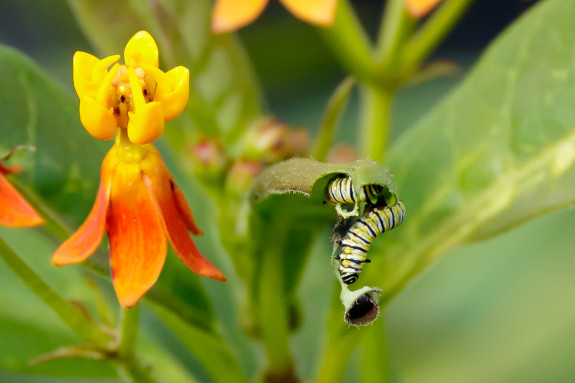
Here’s a cluster of four caterpillars hanging out among the flower buds. Good thing they’re on the biggest plant otherwise, there wouldn’t be enough leaves to go around.
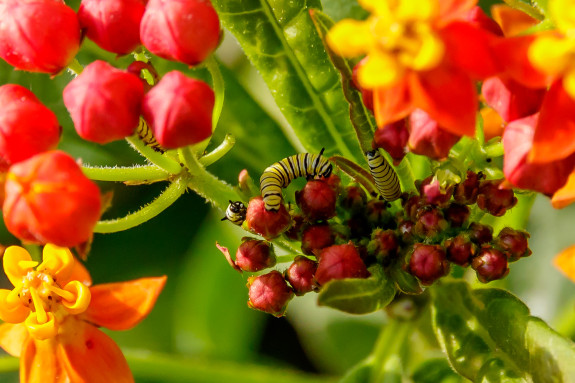
Someone needs to tell this one that you’re supposed to eat the flowers after metamorphosis.
February 20th – Day 3
Caterpillars are still growing, slowly but surely. We’re trying to keep aphids from infesting the plants. Aphids suck all the goodies out of the milkweed plants, making them less nutritious for the caterpillars.
February 19th – Day 2
There are still some eggs left to hatch, but everyone else is otherwise chomping away at the milkweed. Here’s a couple of them basking in the late afternoon sun after a hardy snack. The leaves in the fore and background are already showing some healthy bites.
Here’s a broader view of their homes. We might have to transplant some of the caterpillars to some milkweed that Leane has to make sure everyone gets enough to eat.
February 18th – Day 1
Some of our lower school students noticed some hatchlings when working in the garden. All three of our plants now have caterpillars. This little guy, about five millimeters long, is just beginning to nibble away at this tasty leaf.
